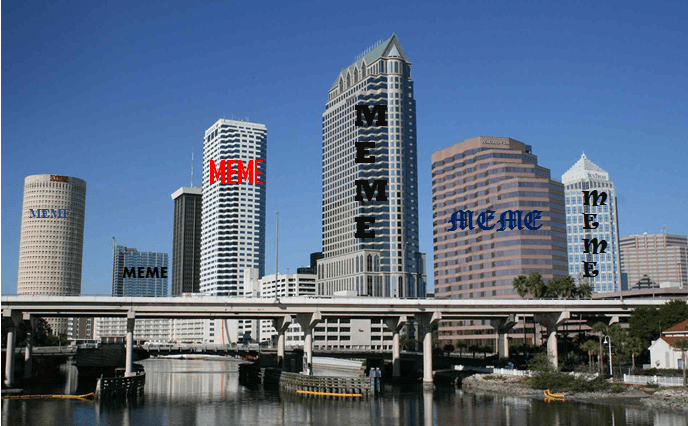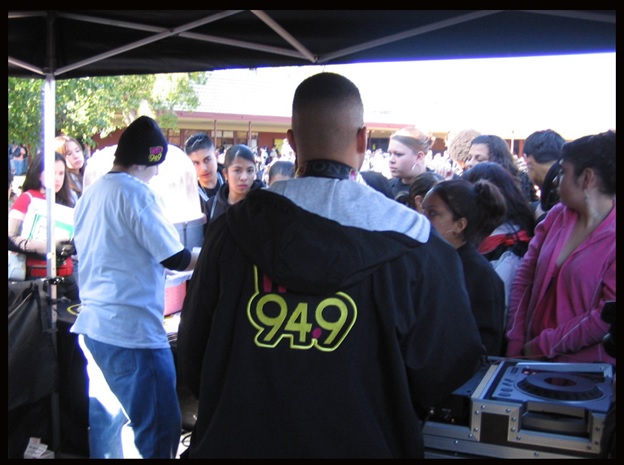
2011 seems like a long time ago. That was the year we hired Lori Lewis as our social media strategist.
At that time, broadcast radio was struggling to get its arms around social – first Facebook, then Twitter, followed by a torrent of smaller players. Often, station hosts and DJs were using their personal accounts to post and tweet. Others huddled in the corner of the air studio hoping no one would ask them to participate.
Radio companies were also at wits end, trying to determine whether social media was a good thing for their stations. I worked for a company that set its internal ISP to prohibit employees from even accessing social media. The CEO was convinced Facebook and other networks were time-sucks serving to distract his employees.
Lori’s role was to help stations make sense out of social media, teach them the philosophy behind audience engagement and connection, and work with them to develop strategies behind their “socializing.”
Here we are more than 9 years later, and I’m not sure we’ve come all that far. I talk to radio stations and the companies that own them all the time, and social continues to be something of a mystery. Or a black hole.
Broadcasters still struggle to set standards for social media activity, resources are wasted, and unknowing employees still get their companies in trouble. I need not list the examples – they are well chronicled and well known.
With great interest, I read Danielle Smith’s story in The Drum – “Goodbye to likes: What should the new engagement metric be?” Smith tells us that in Australia only, Instagram and Facebook are test-driving the concept of hiding “like counts” from everyone except a post’s publisher.
The method behind this social experiment is a reflection of the decreasing value of “likes.” Social media – depending on how you calculate its origins – is at least 15 years old, necessitating rethinking in the way engagement has changed, along with user behaviors.
To that end, Smith posits that gaining attention of fans is a more viable, meaningful way of measuring a brand’s connection. And we know from  experience that for some radio stations, it’s been “Meme City” – one cat or dog post after another. Then there are the tricks and gadgets, like buying “likes” – activities that can amp up social stats in a hurry, yet bring no real benefit to a brand.
experience that for some radio stations, it’s been “Meme City” – one cat or dog post after another. Then there are the tricks and gadgets, like buying “likes” – activities that can amp up social stats in a hurry, yet bring no real benefit to a brand.
So, how is engagement measured in a social media ecosphere where “likes” could become an endangered metric? And how should radio broadcasters think about an emerging new world of measurement?
Smith suggests several measurement ideas, including studying the ways in which consumers are watching a brand’s Stories. The concept is that the greater connection with a station or DJ, the more you’re going to stay with their Stories. The same goes with watching videos all the way through.
Maybe it’s a little different in radio, however. True, re-shares, comments, responses, and followers are all still legitimate measures of engagement. But so are stats like Net Promoter Scores – the metric we use to determine the propensity with which listeners recommend a station or personality to others.
Recommendation matters – especially when it comes from a credible source or a trusted friend, family member, or colleague. That’s why we continue to measure Net Promoter Scores in all our Techsurveys – in commercial, public, and Christian radio. A brand’s word-of-mouth is a leading indicator of its true appeal.
To achieve true engagement, Smith offers a number of recommendations, a few of which I’ve incorporated below:
1. Focus on quality, depth and purpose – Nothing new here, but Smith reminds us that knowing and understanding your audience, and then serving up the content that matters to them is at the foundation of building a great brand. Radio operators know this – it’s how the business has operated for decades. The challenge in these trying times is marshaling the necessary resources for research, producing great content, and then marketing it to the audience.
2. Connect with your audience – Smith is a proponent of regular conversations with customers. The smartest, more intuitive stations have been  doing this for years. It’s Lori Lewis 101 – listening to listeners, establishing dialogue with the audience, and acknowledging them. These are the activities that go to the heart of building engagement.
doing this for years. It’s Lori Lewis 101 – listening to listeners, establishing dialogue with the audience, and acknowledging them. These are the activities that go to the heart of building engagement.
3. Measurement, measurement, and more measurement – Here’s where Smith suggests using every metric available – ratings, streaming, app downloads, Shazam – everything – to paint an ongoing picture – or movie – of what they’re doing and where they’re doing it.
So, Danielle Smith’s recommendations are geared toward the average brand, but when you’re a radio station or a personality show, you have unique engagement opportunities. I’ve listed a number of these below.
4. Connect with them personally – We’re talking eye contact here. The ability to interface with an audience is something radio can do every week  – at concerts and festivals, at sales promotional and appearances, at the mall during holidays, or in the community supporting charitable or civic initiatives. Politicians have proved that engagement can often be achieved with a face-to-face encounter or experience – something every radio brand can accomplish.
– at concerts and festivals, at sales promotional and appearances, at the mall during holidays, or in the community supporting charitable or civic initiatives. Politicians have proved that engagement can often be achieved with a face-to-face encounter or experience – something every radio brand can accomplish.
5. Bring them into your world – The interiors of retailers and restaurants are well-known, and taken for granted by most of us. Even an Apple Store is a known quantity – you’ve been in them umpteen times. But how many people have toured your radio station – the studio, the music library, the platinum records on the wall, the jock lounge. Stations that regularly bring listeners into the building, whether it’s when they pick up prizes or in “open houses” have a wonderful opportunity to engage with fans in ways Spotify, Amazon, and SiriusXM cannot.
6. Give them exclusive experiences – This is another area radio can provide that you just don’t get from other entertainment or information sources. Going backstage, meet-and-greets, intimate concerts, and opportunities to hang with station personalities are all part of the equation that can strengthen engagement.
7. Connect with the community – While there are important national causes, from the Red Cross to Susan B. Komen to Children’s Miracle Network, there’s no substitute for supporting hometown efforts and groups. Whether you’re in Decatur or Detroit, it is the local controversies, community events, and hometown sports teams that move the needle. When stations and personalities do a great job of embracing their local environs, engagement is more palpable, genuine, and real that clicking on a “like” emoji.
Social media has provided a convenient shorthand for radio stations, initially helpful in measuring stations outreach and connectivity. But over time, the algorithms, the manipulative ads, the haters and trolls, and the lack of authenticity have made social media a less valuable indicator of engagement.
The end of “likes” present exciting opportunities for radio broadcasters to focus their efforts on more meaningful measures of engagement, loyalty, and word of mouth.
But as Facebook and Twitter, in particular, roil in controversy and backlash, there are more important measures of a brand’s ability to capture attention and be meaningful parts of people lives.
“Like” it or not.
- Media And Technology In 2025: Believe It Or Not! - April 18, 2025
- In Radio, You Just Never Know - April 17, 2025
- The Secret To Making A Great Podcast (And Great Radio) - April 16, 2025




Fred- Interesting blog. Remove the references to Facebook and Twitter and this could have easily been written in 1984…or anytime pre-internet. Nice to know some things never change.
Dave, that also dawned on me while I was writing it. The technology changes – the fundamentals of engagement and fandom don’t. Many thanks.
Some valid points here, Fred. Major exception is “Bring them into your world.” Most radio stations these days are ghost towns. Not long ago, that was not the case. If you’re in a major, with a staff, it works to your advantage. Showcasing an empty building, while pointing to the monitor where the automation and voice tracked “personality” live, is incredibly anticlimactic and potentially damaging.
John, you’re not the first one who’s told me that. Maybe I spend too much time in major markets where there’s staff, bustle, and good looking facilities. I hear your point, and appreciate the fact you gave me a little jolt of reality. I have been in some pretty bleak buildings over the past few years – not exactly ready for prime time. Thanks.
I might argue that numbers 4-7 on Smith’s list of to do’s could easily be numbers 1-4. Connecting personally with listeners is critical. Reaching out to them, engaging with them, actually “listening” to them helps build brand equity. Great read Fred.
Much appreciated, Jason.
Another great piece Fred! It’s a bit scary since we’ve been conditioned by the immediate satisfaction of ‘Likes’. However, solid engagement wins and perhaps we’ll develop more meaningful posts (and connections) and less of the ‘routine’ content some of us have become comfortable with.
Thanks for continuing to share your insight always thought provoking.
Fritz, thanks for the kind words. Clearly, those of us who market our brands on Facebook (and other social media channels) need to start thinking about live after “likes.” Appreciate you reading our blog.